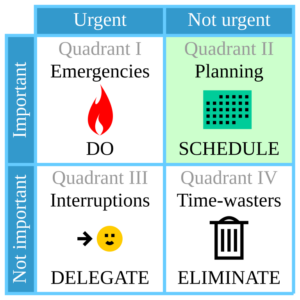Let’s guess: you are juggling a lot of things together right now—attending lectures, completing lab work, preparing for exams, and working in a part-time job to make ends meet. That’s a lot of management required right there. You have to be recognized for the feat you achieve every single day since most students fail miserably in managing work and education together effectively.
But, of course, you face many challenges along the journey, too. It can get hectic managing paramedic education with a professional job. Paramedic education is already very stressful; add a job on top of that, and it can get messy. Students often sacrifice their sleep, personal time, or academic performance. That’s not good management. The good part is that you can fix it. This blog will give you a deep dive into actionable steps you can take to improve your management starting the next day.
Time Management in Paramedical Courses
Create a Weekly Study Schedule
Do you feel directionless about your studies? It’s because you are actually directionless. You don’t keep track of what you do in your day. Don’t worry, however, the fix is simple: start tracking/measuring your daily time usage. Based on the insights from this exercise, block time using a planner or a digital calendar for lectures, study, assignments, work shifts, and rest—color code for easier visibility.
Prioritize Using the Eisenhower Matrix
Does this situation feel familiar to you: you have a lot of tasks in hand but don’t know what to do first? The Eisenhower Matrix is your solution. Simply, any task you have in hand has an urgency and an importance level. If they are both at maximum, do it right away; schedule if not that urgent; delegate if not important; and eliminate if it’s neither urgent nor essential. One theory by Ankur Warikoo adds a third dimension to this matrix: “Does it take a lot of time?” This dimension allows you to free up mind space that requires minimal effort.

Use the Pomodoro Technique
One of the most popular techniques for time management. Using this technique, you block 25 minutes of deep work and 5 minutes of break/rest in a 30-minute time frame. This improves your concentration and also gives you enough time to boost up during rest. After you have completed four Pomodoro sessions (these 25-5 sessions), take a more extended break of 15-30 minutes.
Break Tasks into Micro-Goals
This closely aligns with the “Does it take a lot of time?” dimension in the modified Eisenhower Matrix. Completing small tasks offers your brain the same sense of accomplishment that you get after completing big tasks. Small tasks are easier to get done with and provide a tremendous sense of achievement to your brain—win-win! So the next time you start studying, don’t “study pathology chapter,” “study 2 topics from pathology.”
Study Tips for Healthcare Students
Visual Learning for Complex Subjects
Anatomy, radiology, and lab procedures can feel like complex studies and hard to remember in text. Our brain is a great visualizer. So the next time you struggle to get through the sessions for such subjects, remember them with diagrams, flowcharts, and flashcards (Mobile apps like Quizlet & Anki can help you with this).
Join Study Circles or Peer Groups
It’s fun doing things with people. The unachievable becomes possible. It also reduces study stress and depression. Find and contact people right now who you can study with. They can also act as teachers for you and vice-versa.
Use ‘Dead-Time’ Wisely
Dead time is when you are transitioning from one task to another. It can be a significant amount of time if you add all the dead-time slots in your day. These dead-time slots can be the commute time or if you’re waiting for someone. You can productivise these slots by turning them into mini-study sessions through revisions or by listening to medical podcasts.
Smart Note-Taking
Do you find note-taking tiring? It’s because you are not doing it the smart way. Get your hands on recorded lectures, use abbreviations while taking notes, or use apps like Evernote or Notion to digitalize the note-taking process and keep it organized and structured.
Managing Work and Education Effectively
Communicate With Your Employer
Most employers (especially ones from the paramedic field) will understand your situation as a student, and your manager is most likely to help you manage the obstacles between work and study, allowing you to adapt to your academic schedules.
Align Work With Study
If you have chosen a paramedic course, try working in the same industry—hospital internships, lab assistant roles, or clinic support staff positions. Your academics don’t suffer since you learn both at work and in academics.
Don’t Hesitate to Ask for Help
Asking out for help does not mean that you are dumb or a failure. It’s completely normal to ask for help from classmates, teachers, or even your employer whenever you are in need.
Schedule Breaks and Downtime
Managing work and education requires a lot of energy. You gain energy first and then spend energy on these tasks. Make sure to schedule enough rest and breaks, get adequate sleep, and invest time in your hobbies and things you love doing to power up for better sessions.
Digital Tools to Help Through This Journey
- Google Calendar – Schedule time by blocking slots
- Forest / Pomofocus – Make Pomodoro sessions fun achievements
- Anki / Quizlet – Keep revisions always available
- Trello – Track what tasks are in your hand
- Evernote / Notion – Have all of your notes organized beautifully
Conclusion
We need to acknowledge the fact that handling multiple tasks at once can be very hectic as a student. This blog will act as your mentor. Whenever you struggle with time management between studies and work, you can always revisit this blog and re-apply the knowledge that this blog provides, and you’ll be back on track.

